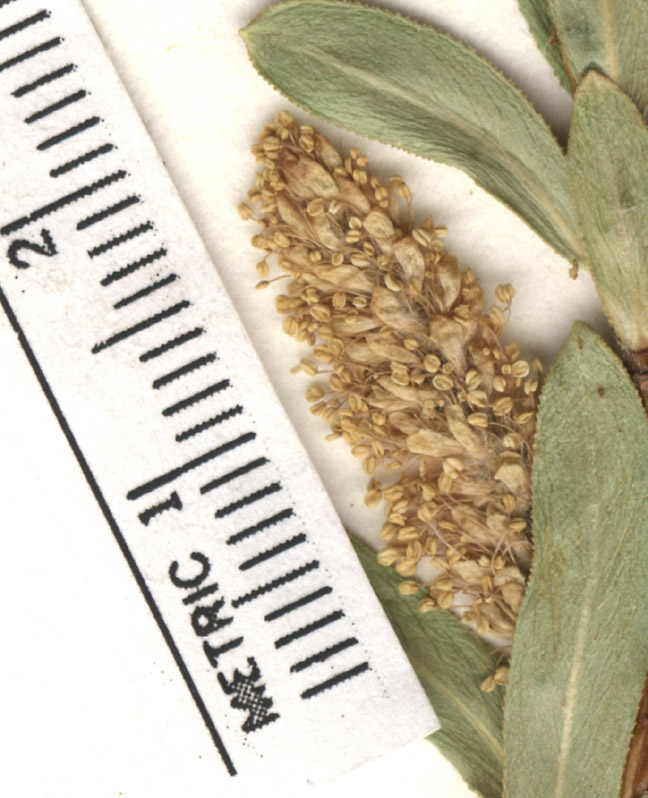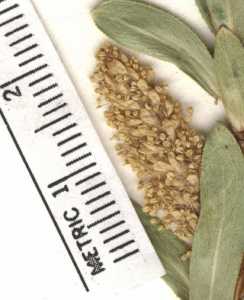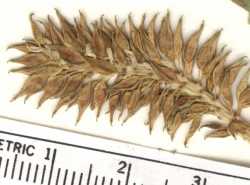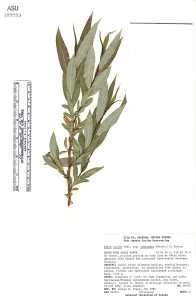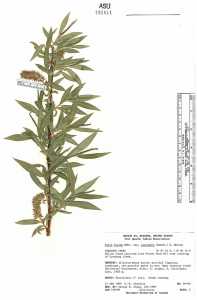Leaves: stipules sometimes rudimentary on early ones, foliaceous on late ones, apex convex; petiole (2-)4-30 mm, with clusters of spherical or foliaceous glands distally; largest medial blade usually hypostomatous or hemiamphistomatous (rarely amphistomatous), narrowly oblong, very narrowly elliptic, narrowly elliptic, lanceolate, narrowly lanceolate, or oblanceolate, base convex to rounded, abaxial surface usually glaucous (rarely not glaucous), glabrous or glabrescent, hairs white, sometimes also ferruginous, straight or wavy (secondary veins protruding abaxially and adaxially). Catkins: staminate 21-78 × 9-14 mm, flowering branchlet 5-24 mm; pistillate moderately to very densely flowered, slender, stout, or subglobose, 18.5-103 × 6-17 mm, flowering branchlet 6-56 mm; floral bract 1.7-4 mm. Staminate flowers: abaxial nectary 0.4-0.6 mm, adaxial nectary 0.2-0.5 mm, nectaries distinct. Pistillate flowers: adaxial nectary 0.2-0.6 mm; stipe 0.8-2 mm; ovules 16-24 per ovary; styles 0.2-0.8 mm. 2n = 76.
Flowering late Mar-early Jun. Thickets, silty, sandy to gravelly alluvium along streams; 0-2700 m; Alta., B.C., Man., N.W.T., Sask., Yukon; Alaska, Ariz., Calif., Colo., Idaho, Mont., Nev., N.Mex., Oreg., Utah, Wash.
Hybrids:
Variety lasiandra forms natural hybrids with Salix eastwoodiae. Hybrids with S. gooddingii have been reported (C. K. Schneider 1921), but no convincing specimens have been seen.
LEAVES: mature blade lower surface glaucous except when young. 2n = 76.
NOTES: See the parent taxon for further description. Montane; thickets along streams, lake shores, meadows, and seepage areas; Apache, Coconino, Gila, Graham, Greenlee, Navajo, Yavapai cos.; 1200-2700 m (3700-8300 ft); Mar-Jun; AK, and w N.W.T. to Sask., Can., s to CA, NM, WY. The report of S. lucida subsp. caudata (Nutt.) E. Murray from AZ (Argus 1986) was an error based on juvenile specimens which often lack leaf glaucescence. Figure 14.
REFERENCES: Argus, George W. 1995. SalicaceaePart 2. Salix. J. Ariz. - Nev. Acad. Sci. 29(1): 39


